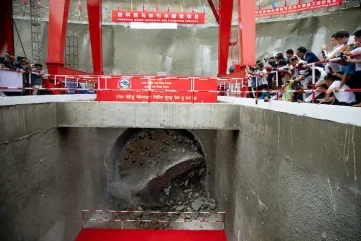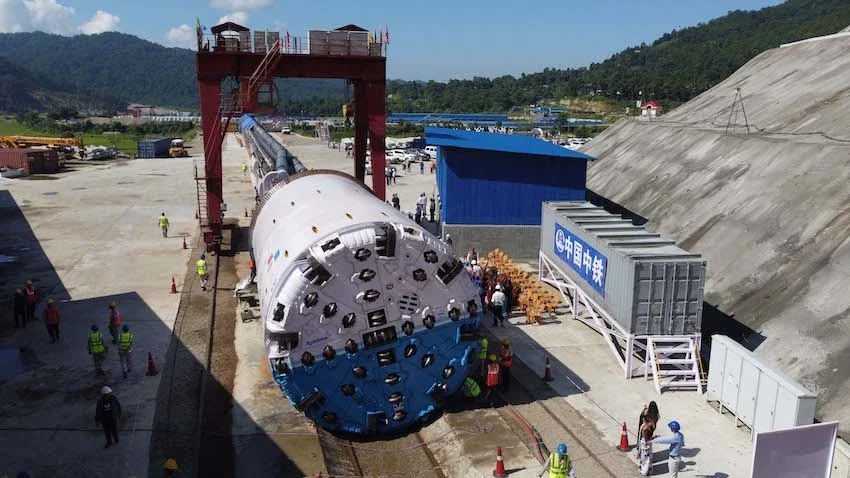
The 6.4m diameter Robbins double shield TBM navigated challenging geology to break through on May 8 in Nepal’s Sindhuli district.
With a length of 13.3km, it is one of the longest TBM-driven tunnels through the Himalayan mountain range and is only the second bored tunnel to be completed in the country.
Ground conditions included two major fault zones with challenging and varied geology ranging from highly jointed mudstone, sandstone and conglomerate to quartzite and granite. The tunnel was bored through mostly igneous rock with a maximum overburden of 1,320m.

During tunnelling, there were “multiple instances” of the shield being trapped, requiring the construction of bypass tunnels to free it. One incident 4km into tunnelling took 27 days to free the machine from collapsing and squeezing ground.
Despite the challenges, the crew made up the time with swift advance rates, including a record 1,503.3m in one month and 72.6m in one day in March 2024.
The TBM’s success is attributed to its design. The machine was originally used with a 5.06m diameter on Nepal’s first TBM-driven tunnel, the Bheri Babai Diversion Multipurpose Project, and incorporated many of the components. It was upgraded to the larger diameter and new front shield components were assembled on site.
Robbins president Lok Home said contractor B-2/COVEC and Robbins had successfully introduced TBM technology in Nepal.
“This country needs more tunnels. To have these good performances on these first two projects is really a good thing for the country and our industry,” he said.
The tunnel connects to a new 28.6MW surface powerhouse on the Marin River. The project will alleviate electricity shortages in the area and provide farmland irrigation in the districts of Dhanusha, Mahottari, Sarlahi, Rauthat and Bara in the Terai Plain by diverting water from the Sunkoshi River to the Marin River.







